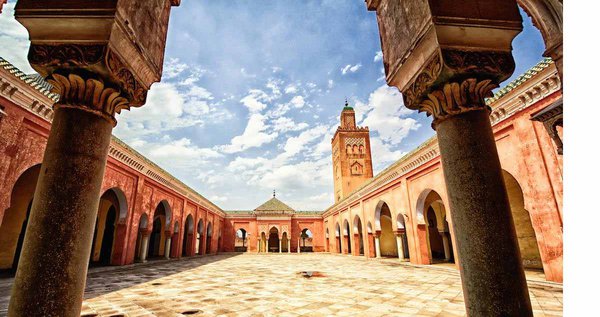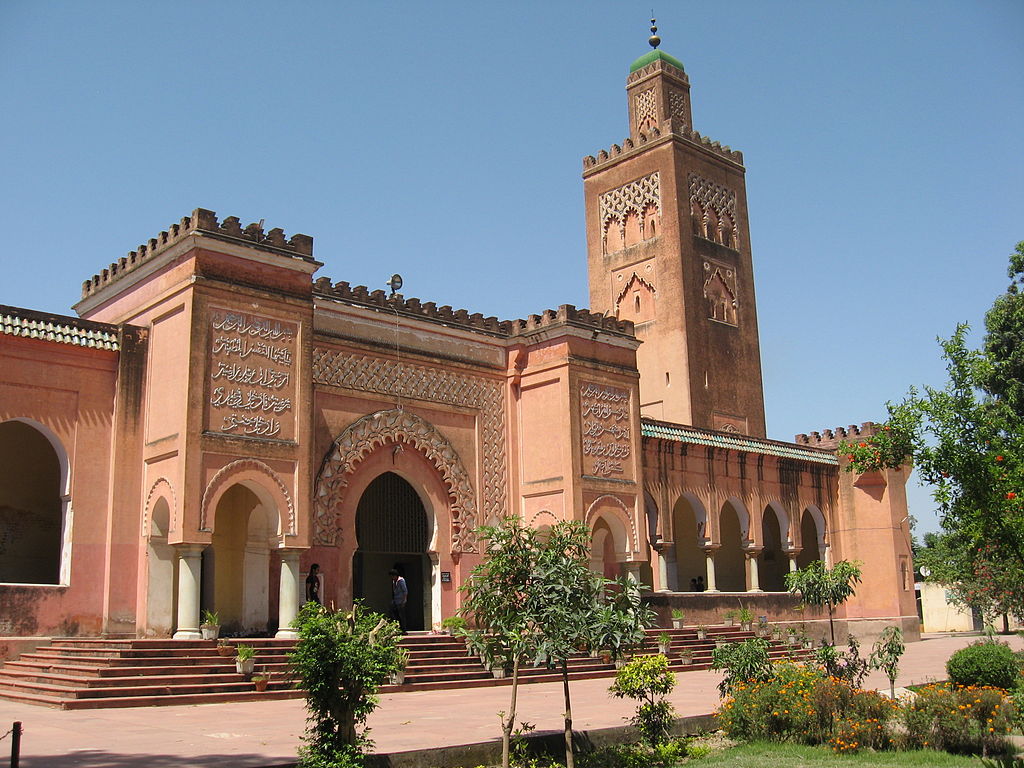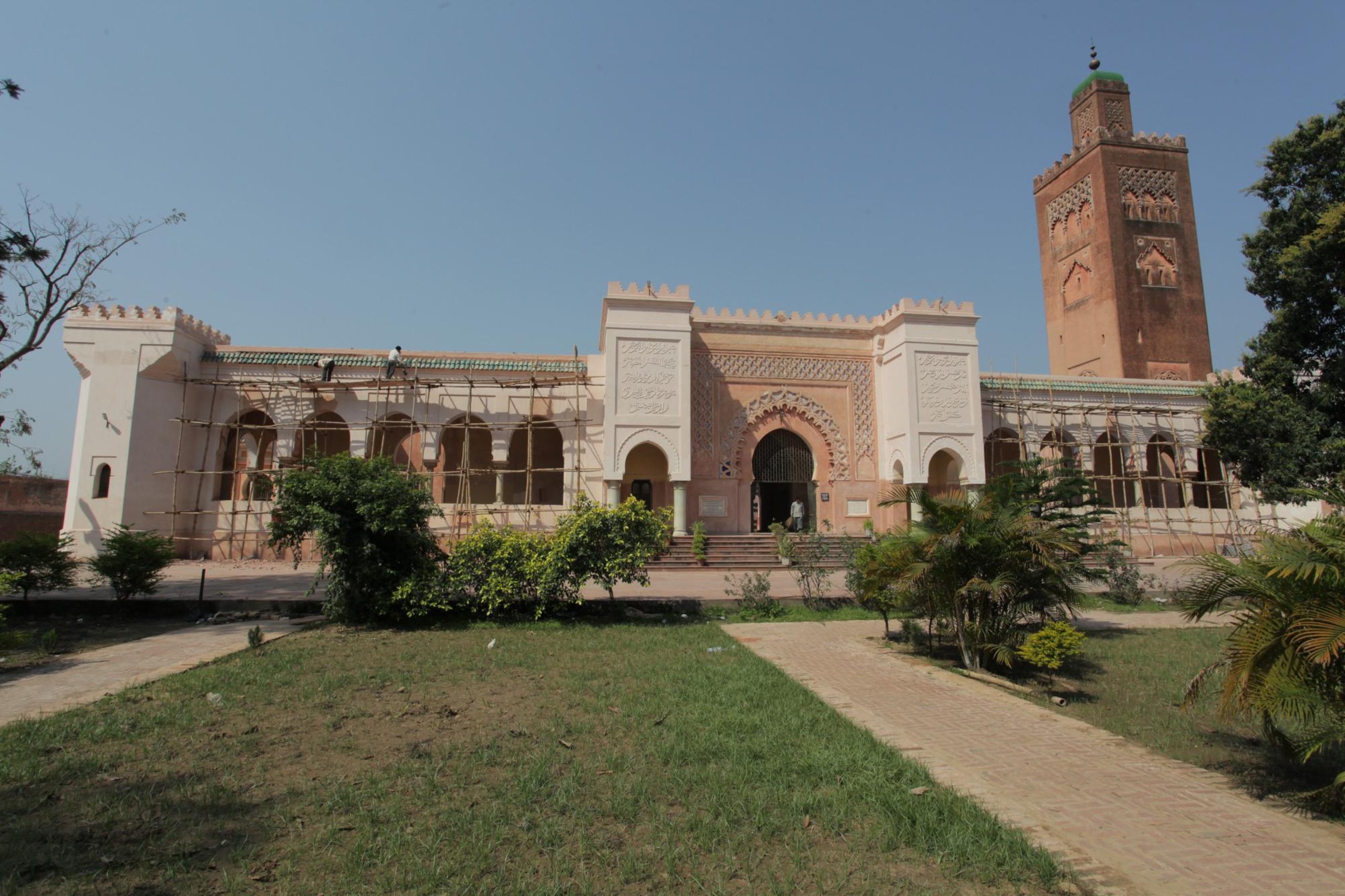


Kapurthala is about 21 kilometers (13 mi) from Jalandhar. Maharaja Jagatjit Singh, the last ruler of Kapurthala, undertook several developmental activities. He believed in catering to his largely Muslim subjects (about 60%). The mosque was his ambitious effort to promote social integration among his people. The then Viceroy of India sent him a letter questioning him on the high costs of building it. The Maharaja replied: "Your Excellency may be unaware that 60 percent of my population comprises my loyal Muslim subjects. Therefore, it is only in the fitness of things that they have the best place of worship in my state. The mosque follows the architectural design of the French architect Monsieur M. Manteaux. The construction started in 1927 and was completed in 1930 and built at the cost of Rs 600,000. The mosque's architectural design is a replication of the Koutoubia Mosque in Marrakesh in Morocco. The artwork of the inner dome is attributed to the artists of the Mayo School of Art, Lahore. Architecturally, the mosque is very elegant and is built with marble stones. Its uniqueness lies in the fact that, unlike other mosques in India, it is built without any external domes or minarets but has a tall tower at one end of the edifice. The mosque's inner courtyard is paved entirely with marble and has a unique design. Glass panes have been fitted in the arched sections of the doors, windows, and other artistic features. Wooden grills are provided in the interior, while latticed ironwork form the external features. The mosque is painted in light red color. However, the doors and windows and eves are painted in green color. In the interior of the mosque, the wooden ceiling is varnished in black and red colors. A model of the mosque was designed by Monsieur Mantout and was exquisitely crafted in wood. This was presented to Mantout by the Maharaja on 14 March 1930. In 1972, as part of the operation "city beautification" program initiated by the state government at the suggestion of then Prime Minister of India, Indira Gandhi, the mosque was cleaned up and a rose garden was laid in its front lawn. The mosque is now in a rundown condition with the growth of wild grass in its back yards. The garden is also in a neglected state. The last time some renovation was done on the mosque was when APJ Abdul Kalam, President of India, visited the mosque in late 2013 to offer prayers.